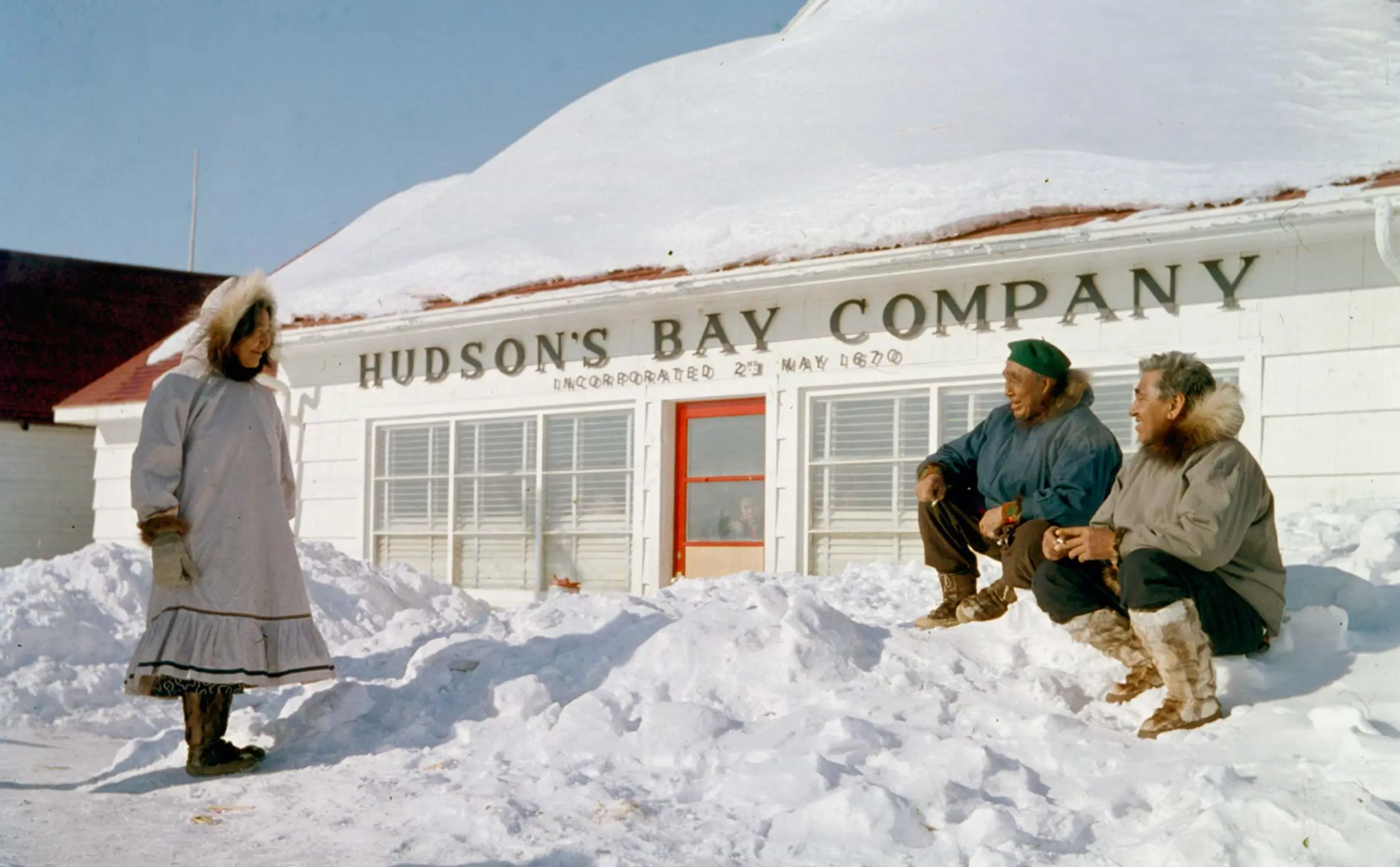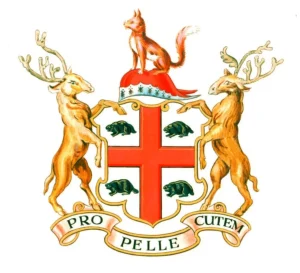
We are sure you may have heard about the Hudson’s Bay Company, a senior joint-stock trading enterprise in the Anglosphere. Today’s article concerns HBC, which operates around 239 chain stores in Canada and North America, incorporating top-rated names, such as Saks OFF 5TH, Hudson’s Bay, and Saks Fifth Avenue. The FortRoddHill team has immersed itself in the brand’s history from the 17th to the 21st centuries, highlighting the most significant events, and is ready to share tidbits of information.
Hudson’s Bay Company Brief Review
Given its evolution and history, we may say that Hudson’s Bay is one of the oldest British trading corporations and among the oldest trading companies globally. The Hudson’s Bay Company’s journey started in 1670 when it was founded under the name “Rupert’s Land.” Its main activity was to trade fur in North America.
The company had no competitors over the fur trade in the regions that now belong to Canada – this dominance lasted until 1859. After closely analyzing the historical background, we are sure this corporation played a crucial role in trade and Canadian history. Let’s take a closer look at the essential milestones that created the legacy of this iconic brand.
| Industry | Business and enterprise, retail sale in non-specialized stores |
| Founded | May 2, 1670 |
| Founder | King Charles II of England |
| Country | Canada |
| Headquarters | Toronto and Brampton |
| Chief Executive Officer (CEO) | Richard Baker |
| Employees | 70,000+ |
Hudson’s Bay Company History

The history of the Hudson’s Bay Company is over 350 years, and, unsurprisingly, the brand has experienced many transformations and significant events and changes. After close research, our analysts have divided all available information about this brand into a few time frames. So, continue reading to get a better feel for the establishment.
17th century
The starting point in the history of Hudson’s Bay was its incorporation on May 2, 1670. Its founder was Charles II, the king of Great Britain and Ireland. He established a royal charter, which gave the company special trading opportunities over 1.5 million square miles of land (nearly one-third of the modern-day territory of Canada). This land was named “Prince Rupert’s,” who was the king’s cousin and the brand’s first governor. The territory covered all areas fed by rivers that emptied into Hudson Bay.
The company’s main product was beaver pelts, which were highly valued in Europe for hat-making. HBC became a leading figure in the fur trade during that period. The main reason for its success was the company’s cooperation with Indigenous communities, which had tremendous experience trapping and selling fur.
We also should note that in the 17th century, the Hudson’s Bay Company built the first permanent trading post, Fort Rupert (modern Quebec territory). Besides, the HBC established five other stations between 1668 and 1717. Here are all:
- Fort Albany, Ontario (1679);
- Moose Factory (1673);
- New Severn (1685);
- York Factory (1684);
- Fort Churchill (1717).
Plus, HBC invested in expeditions to map Rupert’s Land and find new trading possibilities. This had a massive impact on North American geography.
18th century
Let’s delve into the history of the Hudson’s Bay Company in the 18th century. In that period, the Nine Years’ War finished, followed by the signing of the Treaty of Utrecht between France and Great Britain. This treaty guaranteed that France did not have any claims to Hudson Bay. As a result, British control over the region has increased.
The following essential event was the constricting of the Prince of Wales Fort at the mouth of the Churchill River. This was a solution to strengthening its trading presence and defensive opportunities. During the 18th century, supplemental inland trading posts, including those on the Chickney Creek Capusco River, were created. This allowed the company to expand its reach. Also, we should note that in 1779, the North West Company (NWC) was created in Montreal. It became HBC’s main competitor.
19th century
We should start in 1821 when the British government united the HBC and the North West Company. The main reason for the solution was a desire to end their competition. After that, the Hudson’s Bay Company continued a regional monopoly but had competitors like independent traders Andrew McDermott (Dermott) and James Sinclair.
Nonetheless, the brand ran all trading activities in the Pacific Northwest region for the whole of the 1820s and 1830s. Interestingly, in 1834, the Hudson’s Bay Company created Fort Boise as a competitor to American Fort Hall.
Starting in 1849, the HBC began decreasing its monopoly. In 1869, HBC was sold to the Canadian government for CA$10 million, marking a turning point in its future development.
By the second part of the 19th century, the HBC transitioned from its fur-trading roots, opening its first chain stores and boosting its range of goods to adapt to changing economic backgrounds.
20th century
The Hudson’s Bay Company planned significant changes and improvements in 1912, but the First World War hindered all ideas. After the war, the corporation strengthened its trade based on fur and land selling and started oil production. In 1926, HBC co-founded Hudson’s Bay Oil and Gas Company (HBOG). Also, it opened trading posts in the Canadian Arctic.
The second part of the 20th century had plenty of essential events in the company’s development. Let’s shortly discuss these facts:
- In 1960, the company bought Morgan’s, enabling it to expand to Ottawa, Toronto, Montreal, and Hamilton.
- 1965. The Hudson’s Bay Company edited the name of its stores to The Bay and created a new logo.
- 1967. HBC became the sixth-biggest oil producer in Canada.
- 1970. The Hudson’s Bay Company celebrated its 300th anniversary and relocated to Canada, with the headquarters transferred to Toronto.
- 1972. HBC acquired a four-store Shop-Rite and enlarged it to 65 stores in Ontario.
- 1980. The company became a controlling shareholder in Roxy Petroleum.
- 1987. HBC eliminated its debts by selling non-core assets, exiting the oil business, and selling its Canadian fur auction operations.
- 1990. The company bought Towers Department Store, uniting them with the Zellers chain.
- 1991. HBC stopped selling fur in response to backlash from animal rights advocates opposing the use of animals for such products.
21th century
On 16 July 2008, the corporation was sold to NRDC Equity Partners for approximately $1.1 billion. In October 2012, the HBC revealed plans to rebrand its Bay department stores under “Hudson’s Bay.” It became a new way in the brand’s history with a new logo.
In January 2016, the company bought an online bargain deals website (Gilt Groupe) to expand its digital presence. In addition, HBC started expanding into European countries, including the Netherlands and Germany.
July 2019 marked the beginning of the company’s future privatization. After careful work and planning, the company went private in 2020. Richard A. Baker became a CEO. Speaking of the fresh news, we should note that the company bought Neiman Marcus Group in July 2024 for $2.65 billion.
Hudson’s Bay Company Logo History
We can highlight three main stages of Hudson’s Bay Company logo history: 1670 (foundation era), 1965 (modernization period), and 2013 (updated stage). Let’s discuss each of them below.
The Initial Logo (1670)

The first logo included a classic coat of arms that showed a royal charter and British heritage. The design was based on four beavers, which symbolized the fur trade. Above the shield, we can see the Latin motto “Pro Pelle Cutem,” which means “Skin for Skin.” It emphasized the Hudson’s Bay Company’s trade in animal pelts.
Folk-friendly Logo (1965-2013)

In 1965, the company got a new “folk-friendly” logo created by Lippincott & Margulies. This logo features a modern yellow “B.” We can highlight this version as an original and contemporary aesthetic in the trading area.
Rebranding Campaign (2013-recent)

In 2013, the Hudson’s Bay Company launched a new rebranding campaign. The logo was created by Mark Summers. Interestingly, the typeface resembles the British designer label Burberry. The Vancouver flagship store was the first to show a new logo in December 2012.
List of HBC Governors in History
The FortRoddHill team has made a chronological table of governors of the Hudson’s Bay Company:
| Governor’s Name | Years of Service |
| 1670–1682 | Prince Rupert of the Rhine |
| 1683–1685 | James Stuart, Duke of York |
| 1685–1692 | John Churchill, Earl of Marlborough |
| 1692–1696 | Sir Stephen Evance |
| 1696–1700 | Sir William Trumbull |
| 1700–1712 | Sir Stephen Evance |
| 1712–1743 | Sir Bibye Lake |
| 1744–1746 | Benjamin Pitt |
| 1746–1750 | Thomas Knapp |
| 1750–1760 | Sir Atwell Lake |
| 1760–1770 | Sir William Baker |
| 1770–1782 | Sir Bibye Lake Jr. |
| 1782–1799 | Samuel Wegg |
| 1799–1807 | Sir James Winter Lake |
| 1807–1812 | William Mainwaring |
| 1812–1822 | Joseph Berens |
| 1822–1852 | Sir John Henry Pelly |
| 1852–1856 | Andrew Wedderburn Colvile |
| 1856–1858 | John Shepherd |
| 1858–1863 | Henry Hulse Berens |
| 1863–1868 | Sir Edmund Walker Head |
| 1868–1869 | John Wodehouse, 1st Earl of Kimberley |
| 1869–1874 | Sir Stafford Henry Northcote |
| 1874–1880 | George Joachim Goschen |
| 1880–1889 | Eden Colvile |
| 1889–1914 | Donald Alexander Smith |
| 1914–1915 | Sir Thomas Skinner |
| 1916–1925 | Sir Robert Molesworth Kindersley |
| 1925–1931 | Charles Vincent Sale |
| 1931–1952 | Sir Patrick Ashley Cooper |
| 1952–1965 | William “Tony” Keswick |
| 1965–1970 | Derick Heathcoat-Amory |
| 1970–1982 | George T. Richardson |
| 1982–1994 | Donald S. McGiverin |
| 1994–1997 | David E. Mitchell |
| 1997–2006 | L. Yves Fortier |
| 2006–2008 | Jerry Zucker |
| 2008 | Anita Zucker |
| 2008–present | Richard Baker |
Hudson’s Bay Company Historical Facts
When preparing the article about this company, we found many interesting facts about the history of the Hudson’s Bay Company. For example:
- Hudson’s Bay Company (HBC) was a monopoly for over 179 years (from 1670 to 1849).
- During World War I, HBC ran a steamship fleet of over 300 vessels, transporting munitions and food to support the Belgian and French Belgian governments.
- Between 1820 and 1870, the Hudson’s Bay Company launched its paper money. The banknotes are issued in London, the UK.
- HBC was the go-to outfitter for the Canadian Olympic team. It was in 1936, 1960, 1964, 1968, and more recently in 2006, 2008, 2010, 2012, 2014, and 2016.
- In 2023, HBC officially finished selling animal fur products.
Summary
Summing up, we have analyzed the Hudson’s Bay Company and its main historical facts from the 17th to the 21st centuries. The corporation was founded in 1670 and is the oldest retail business in the Canadian territory. Nowadays, the brand has a wide range of stores with dresses, accessories, toys, and home furnishings. However, such popularity did not come immediately.
The company has survived dozens of transformations, historical events, and wars and has withstood bankruptcies and competition. As we can see, the Hudson’s Bay Company had over 40 governors, three crucial logo transformations, and numerous historical events. Finally, the company has a stable income and continues to grow.
